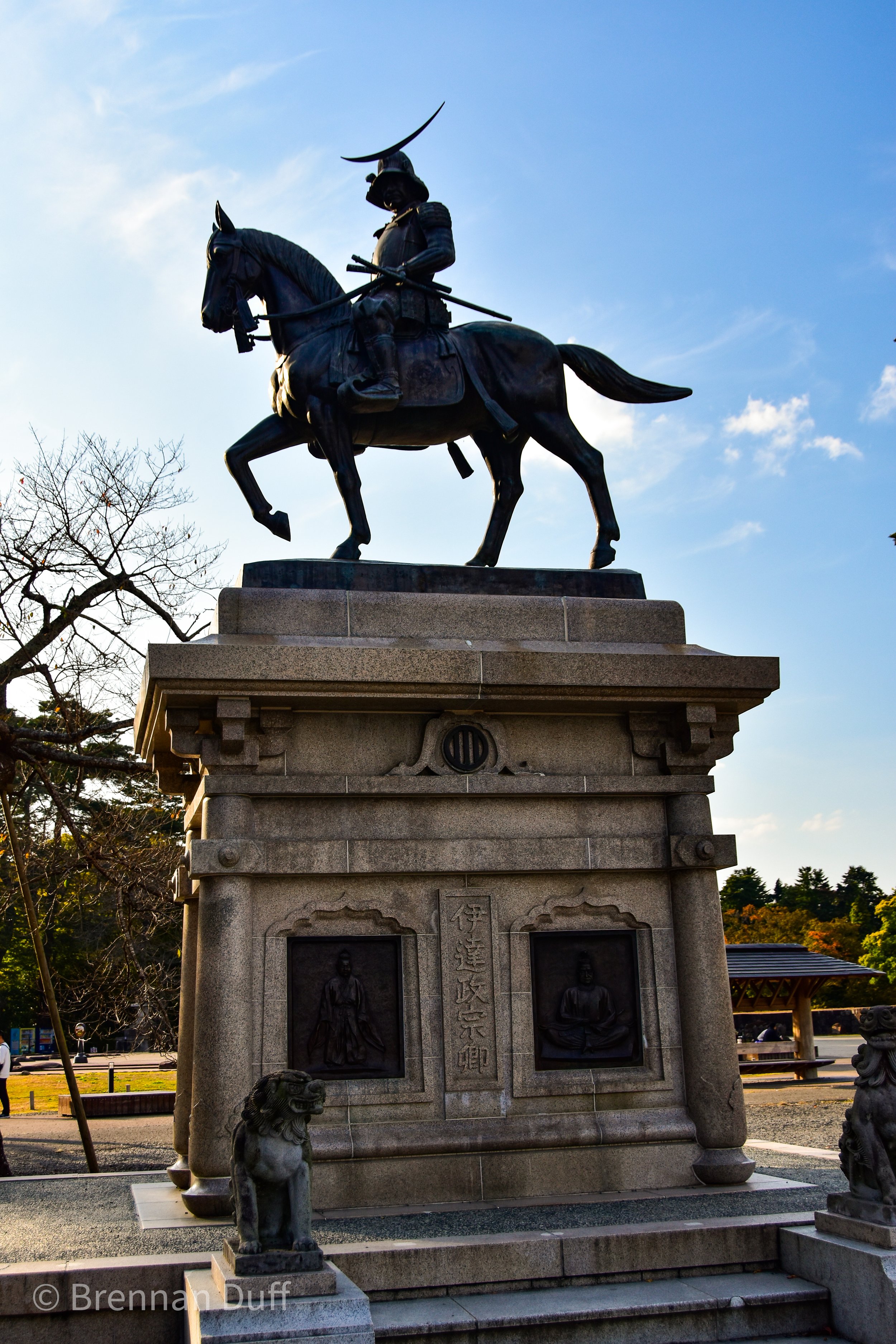Sendai-jôato (Sendai Aoba Castle Ruins)
Sendai-jôato, or Sendai Castle Ruins, is the remaining fortification on the Mount Aoba bluffs overlooking the city of Sendai. The castle grounds are also referred to as Aoba Castle, Sendai-Aoba Castle, or just Sendai Castle but ultimately they’re all the same location. The castle was the seat of power for the Date samurai clan in the Tohoku region when it was first constructed in 1600 under the command of renowned leader Date Masamune. As a result, the city of Sendai is very closely tied to the reputation and image of Date Masamune. While very little of the castle remains today due to natural disasters, the dismantling of fortresses in the Meiji Restoration of 1869, and the carpet bombings by US bombers in WWII, a few walls and turrets were reconstructed. There is a statue of Masamune overlooking the city of Sendai and visitors are encouraged to share the same sight of the city as its famous founder.
For visitors: 8.
If you’re visiting Tohoku and Sendai specifically, there’s really no reason not to go. The views from the castle grounds are amazing and the degree of visibility is astonishing. I was there in early-middle autumn and the changing of the tree colors turned the entire city and surrounding countryside a fantasticly warm palette. Standing near the statue, to the left you can see the massive white Kannon statue in the north, in the middle is Sendai, and to the right is the sea. The statue of Date Masamune is an icon of the city and there are many people there taking photos. When I was there, there was also a man dressed in period clothing speaking in Edo-period Japanese. Based on the crest on his haori (robe), I assume he was portraying Masamune himself. If you find yourself in need of a break, there are also restaurants and cafes nearby so you can rest and enjoy the view.
Just a quick little perspective check, there’s also a stone tower with a bronze eagle just in front of it. The eagle was a symbol of the Date clan and it was originally atop the stone tower. But the tower and the eagle now have a different purpose, as a memorial to the 2011 Tohoku Earthquake and Tsunami Disaster. 13 years later (from when I am writing this), it’s hard to imagine that this whole area was absolutely devistated by the earthquake and the tsunami that followed. Coastal communities are still working to recover today, but so much of it looks like nothing has changed. It both made me sad, but also made me happy that through hard work and the strength of a community, what’s broken can be fixed.
Fun fact: though the mountain is called Aoba, and it uses the kanji character for blue to be read as “Blue Leaf”, it is interpreted as “Green Leaf” and not blue, because ao is traditionally read as green.
Basically, this is THE statue of Date Masamune.
The eagle was a common symbol for the Date clan. This monument was repurposed to honor those lost in the 2011 Tôhoku Earthquake and Tsunami.
Could it be? Is that Masamune-sama himself?!?!



